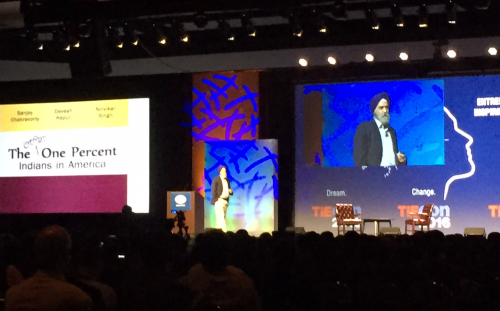Campus News
Economics professor outlines rapid success of America’s ‘other one percent’
Nirvikar Singh, UC Santa Cruz professor of economics and director of the Center for Analytical Finance, described the rapid economic success of Indians in the U.S. during a keynote address at TieCon 2016.

Nirvikar Singh, UC Santa Cruz professor of economics and director of the Center for Analytical Finance, described the rapid economic success of Indians in the U.S. during a keynote address at TieCon 2016, the largest conference dedicated to entrepreneurs.
More than 4,000 entrepreneurs, venture capitalists, and Silicon Valley professionals attended the event organized earlier this month by The Indus Entrepreneur (Tie) Silicon Valley.
Singh’s talk was based on his forthcoming book, The Other One Percent: Indians in America. People of Indian origin, including those born in India and the U.S. born, make up about 1 percent of the American population now, up from barely one-half percent in 2000, Singh said.
Median annual household income for Indian Americans in 2010 was $88,000, according to the Pew Research Center. That compares with $66,000 for Asian Americans and $49,800 for all U.S. households.
“How are Indians so successful,” Singh asked during his address on the conference’s final day. Three processes—selection, assimilation and entrepreneurship—have led to a rapid rise of a population from a poor, developing nation to the position of the highest-income and most-educated group in the world’s most advanced nation, Singh said.
Some of the reasons he cited are: English language fluency, levels of education, selective immigration–with highly sought occupational skills favored–and stable family structures.